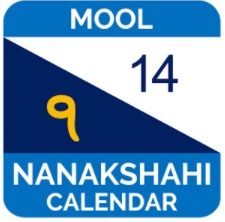How the Sikh Calendar Evolved
| CE | Historic events, resolutions, and hukamnamas. |
|---|---|
| 1710 | The term Nanakshahi has been referred to in some historic documents and is not a new term. Banda Singh Bahadur adopted the Nanakshahi Sammat in 1710 C.E. after his victory in Sirhind (12 May 1710 C.E.). The year 1710 C.E. was Nanakshahi 241. |
| For decades Sikhs around the world have been asking for a separate calendar for Sikhs. Canada-based Sikh scholar Pal Singh Purewal designed a calendar as the Nanakshahi Calendar. | |
| 1995 | The Institute of Sikh Studies, Chandigarh, formed a committee comprising of about 40 eminent scholars from three Universities in the state and other institutes. The main proposals given were submitted to the S.G.P.C. The changes and why the are necessary. |
| 1996 | The scholars submitted a report to the SGPC in 1996 |
| 1997 | S. Gurcharan Singh Tohra, President SGPC, announced in October, 1997 that SGPC would adopt this calendar and implement it in the historic year of 1999 CE, when Khalsa Panth celebrates its tercentenary. (ਸ਼੍ਰੋ:ਗੁ:ਪ੍ਰ: ਕਮੇਟੀ , ਮਾਰਚ, 1998, ਨਾਨਕਸ਼ਾਹੀ ਜੰਤਰੀ ਸੰਮਤ 531 (1999-2000 ਸਾਂਝਾ ਸੰਨ) |
| 1998 | The SGPC General House passed a resolution to implement the calendar. |
| 1999 | SGPC released a Nanakshahi Calendar (close to the original) |
| 2003 | SGPC adopted the Nanakshahi Calendar, Approved by Akal Takht PSGPC – Pakistan Sikh Gurdwara Parbadhak Committee (PSGPC) has remained with 2003 version of calendar since 2003. |
| 2010 | “SGPC modified the calendar prepared by Purewal as per the Bikrami calendar. The Sikh bodies termed it a step taken under pressure from the RSS and SAD.” HT |
| 2011-2012 | Lobbying Continues Against Changes to Nanakshahi Calendar Nanakshahi calendar: Jathedars adopt changes, final call by SGPC |
| 2013 | SGPC reverted to the Bikrami calendar but called it the Nanakshahi Calendar. “Those Sikh festivals, which are celebrated at the same time as similar Hindu religious events, such as Diwali and Hola Mohalla, will still have their dates set by the Vikrami calendar.” |
| Majority of the gurdwara managements across the world oppose the modified version of the calendar citing that the SGPC reverted to the Bikrami calendar and that on the Bikrami Calendar, dates of many gurpurbs coincide, thereby creating confusion among the Sikh Panth. [1] | |
| 2017 | The Sikh representatives of the Palatine Gurdwara Sahib organized a three-day conference from November 10 – 12, 2017 to implement the Mool Nanakshai Calendar adopted by many communities and organizations worldwide. |
| 2018 | Punjab celebrates Gurpurab Guru Nanak Dev Ji on April 14th per the Mool Nanakshahi Calendar, HT |
| 2019 | 90% of Gurwaras in Jammu and Kashmir adopt and implement the Mool Nanakshahi Calendar |
| 2020 | Pakistan SGPC adopts the Mool Nanakshahi Calendar, Sikhsiyasat |

Additional Reading
- Sikhs around world celebrate new year using Edmonton man’s calendar (14 March 2018) Edmonton Journal by Juris Graney
- Harjinder Singh Dilgeer, A. T. Kerr (1995) Akal Takht Sahib. Sikh Educational Trust in collaboration with the Sikh University Centre, Denmark
- Gandhi, Surjit Singh (1999) Sikhs in the Eighteenth Century: Their Struggle for Survival and Supremacy. Singh Bros
- Singh, Patwant (2008) Empire of the Sikhs: The Life and Times of Maharaja Ranjit Singh. Peter Owen
- Dilgeer, Harjinder Singh (1997) The Sikh Reference Book. Sikh Educational Trust for Sikh University Centre, Denmark
- Dhillon, Harish (2013) First Raj of the Sikhs: The Life and Times of Banda Singh Bahadur. Hay House
- Singh, Surjit (6 March 2018). “HT Explainer: Know about the controversial Nanakshahi calendar”. Hindustan Times. HT Media. Retrieved 15 March 2018.

Thank you ji. This puts everything in perspective.